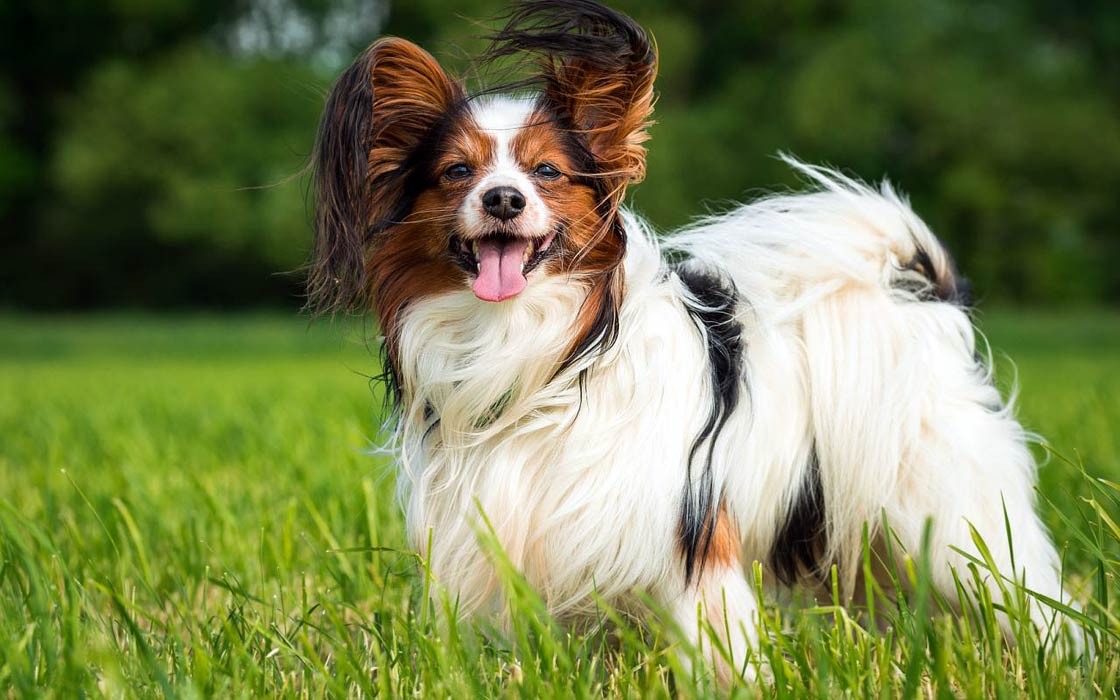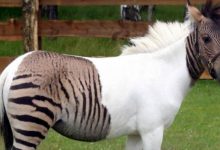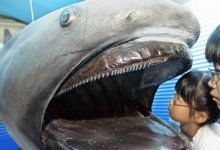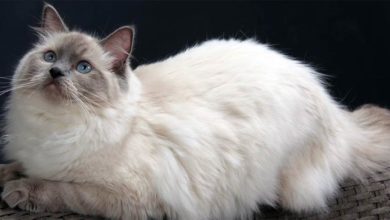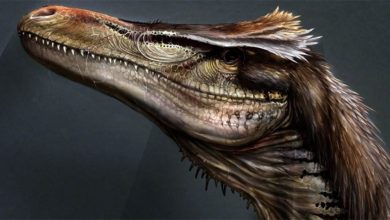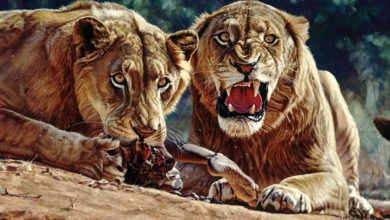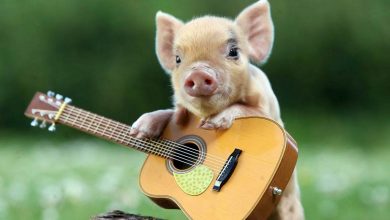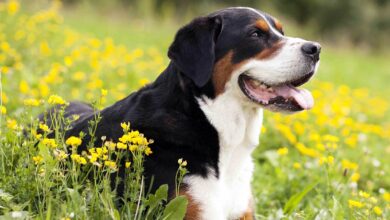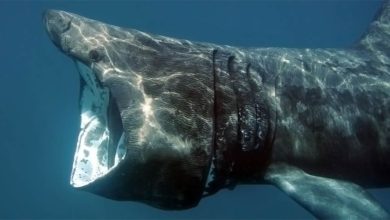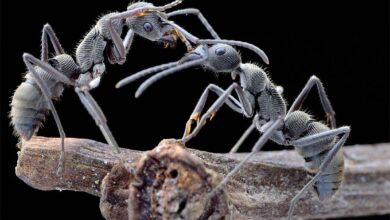Continental Spaniel – Renaissance dog
One of the oldest European races, adored by the aristocracy. These dogs have ears that resemble butterfly wings. Let’s meet the continental spaniel in Papillon and Phalène varieties. The above title did not come from the air. It is not, however, that the Continental Spaniel is an encyclopedist dog. Rather, the term “Renaissance dog” refers to the age of the breed. There are many indications that these spaniels lived as early as the 15th century, i.e. in the Renaissance period. It is possible, however, that small parlor dogs with floppy ears appeared in the 13th century (Middle Ages).
For centuries, these dogs have been the favorites of women of noble birth – numerous images testify to this. It is said that Marie Antoinette herself – Queen of France – went to the guillotine with a spaniel in her arms. What do continental spaniels charm today? Perhaps you can deduce this from the following article.
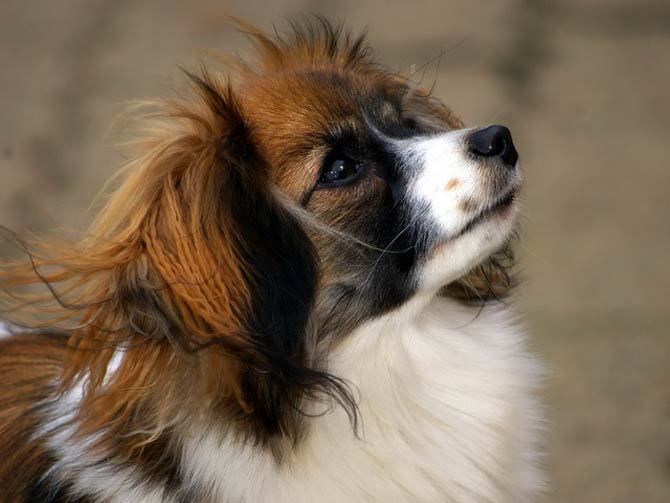
FCI classification:
- Group 9 Companion and Toy Dogs
- Section 9 Continental
- Without working trial
- Other names (Papillon): Phalène (drop ear type), Continental Toy Spaniel, Epagneul Nain Continental
- Common nicknames (Papillon): Butterfly dog, Squirrel dog (due to tail carriage)
- Other names (Phalène): Epagneul Nain Continental, Moth-eared toy spaniel
- Common nicknames (Phalène): drop-eared Papillion
- Origin: Belgium / France
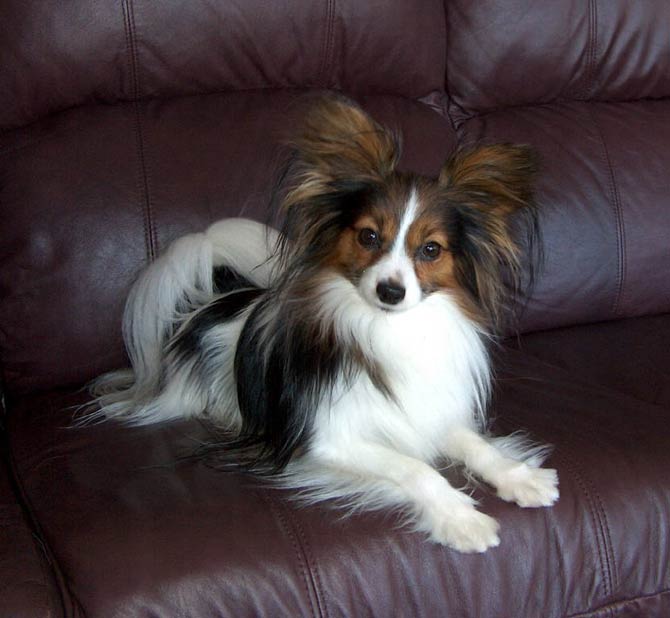
History of the breed
Originally, dogs of this breed had only drooping ears, as evidenced by images of the continental spaniel. His images can be found in Italian paintings from the 13th-15th centuries. He was often depicted lying in the lap of a Spanish or French noblewoman.
With time, as a result of selective breeding, individuals with protruding ears resembling butterfly wings appeared among these small dogs. This variation was given the name Pappilon, which in French means “butterfly”. To this day, puppies with both protruding and drooping ears can be born in one litter.
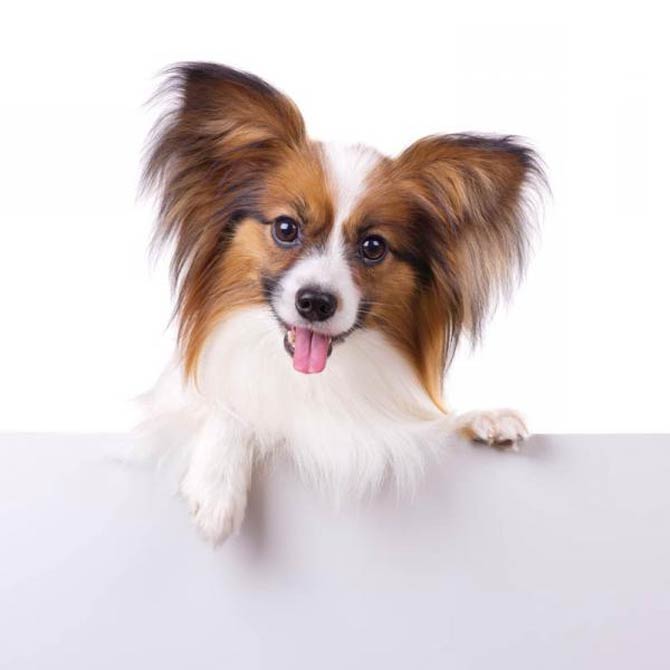
Characteristic
Appearance
A harmoniously built Continental Spaniel is a small, petite, but not sickly dog. The small head is slightly rounded between the ears; the muzzle appears relatively short and narrow. The eyes are of medium size, round and dark in color. A characteristic feature of the breed are large ears with rounded tips, which, depending on the variety, may be drooping (Phalène variety) or protruding (Papillon variety).
Both types of auricles are covered with long, fringed hair. The silhouette is crowned with a high-set tail, covered with long hair. The whole body is covered with a thin, wavy, long robe in one layer. It is not very soft to the touch – rather hard. There is a jabot on the chest that extends to the limbs, and a ruff around the neck. The coat should be white with patches of any color (except liver). According to the FCI breed standard, white must dominate the body and limbs. It is not uncommon that almost the entire head is pigmented.
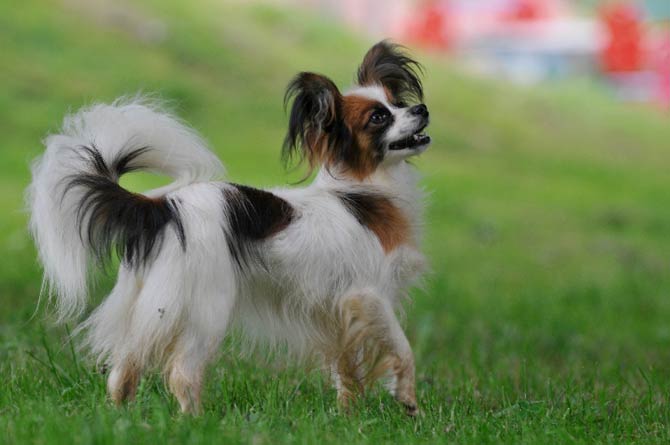
Temperament
Despite its small size, intelligence and friendly disposition, the Continental Spaniel is a demanding dog. He needs a large dose of physical activity in the open air. It has very large energy resources. Moreover, it is full of enthusiasm, joy and charm. However, high activity does not go hand in hand with unbalance and noisy – the Continental Spaniel is very docile and quiet.
He seems patient and affectionate, which is why he loves hugging. He also likes to learn almost circus tricks.
He must be taught that he is not the leader of the human herd. Otherwise, he will become possessive of his guardian. Neurotic behavior, anger, aggression, morbid shyness, separation anxiety are symptoms of the so-called small dog syndrome. It appears in small dogs, whose owners do not set any boundaries. In extreme cases, a dog affected by this behavioral disorder may bite people, growl at them, and bark obsessively. We must emphasize that these are not the characteristics of continental spaniels, but the result of negligence on the part of the keepers.
It must be remembered that a small dog also has to follow certain rules in order to live in harmony and harmony with its owners. A well-behaved spaniel is very loving, calm, joyful and friendly towards children. It can sometimes become embarrassing for a family living in a block of flats because it has a guardian instinct – it can defend its territory by barking if it hears an unfamiliar sound.
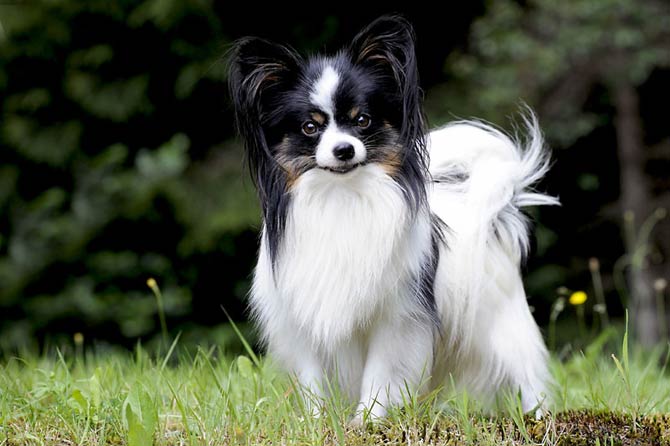
Health condition
Patellar dislocation problems may arise within the breed. There are also individuals with fontanel. It may close over time, but if this does not happen, the dog must be constantly looked after by a human.
Some dogs of this breed may have problems with the use of anesthesia. Continental spaniels also have seizures, dental problems, and allergies. There are also cases of retinal atrophy.
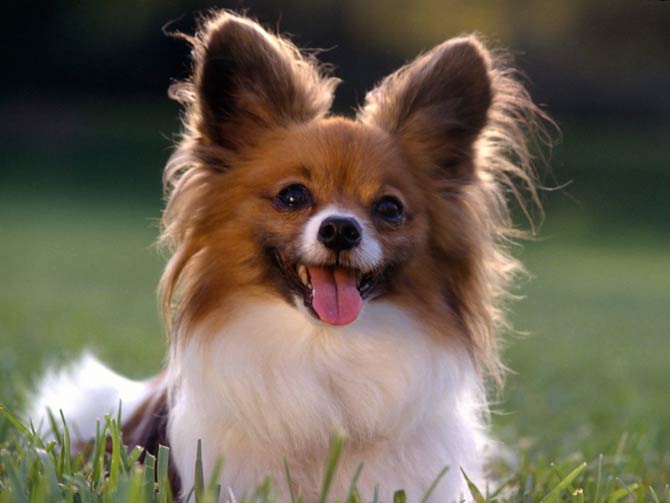
Detailed data / dimensions (size)
Continental spaniel
- Height at the withers:
- Males: 20–28 cm (8–11 in)
- Females: 20–28 cm (8–11 in)
- Weight:
- Males: 3.6–4.5 kg (8–10 lb)
- Females: 3.2–4.1 kg (7–9 lb)
- Lifespan: 12 -16 years
- Coat: straight, long, fine, single-layered
- Color: white with patches of anything but liver
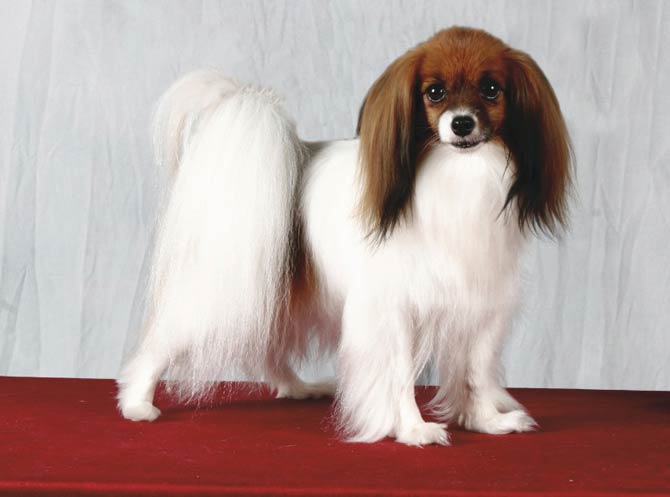
Continental spaniel – interesting facts
- Papillon is ranked 8th among the most intelligent dog breeds.
- The continental spaniel is one of the oldest European dog breeds – it can be around 700 years old.
- Due to its long, fringed hair and a curled tail over its back, the Continental Spaniel was once called the “squirrel spaniel”.
- The tassels on the tail can be up to 15 cm (5.9 in) long.
- The name of the variety phalène means “night moth”.
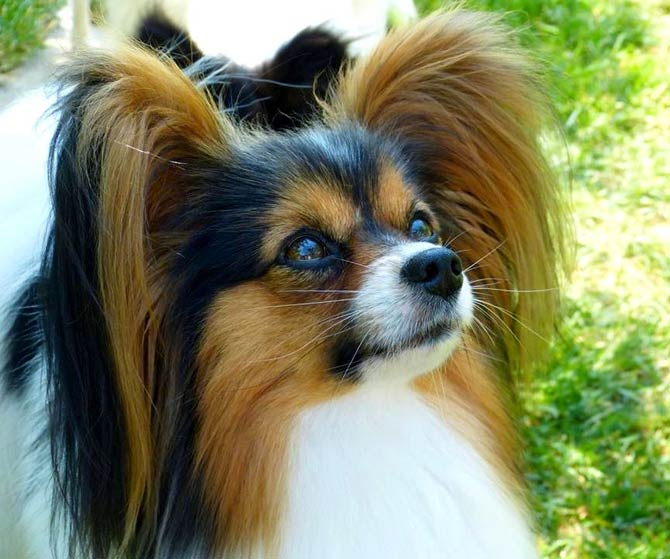
Recommended
- The smartest dogs
- The tallest dogs
- The most aggressive dogs
- The oldest dogs
- Pets
- Dogs
- Cats
- Wild cats
- The fastest animals
- The fastest birds
- The largest eagles

